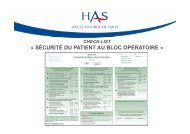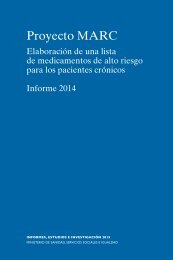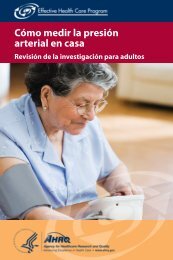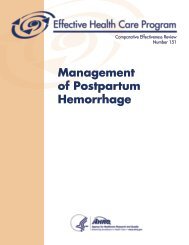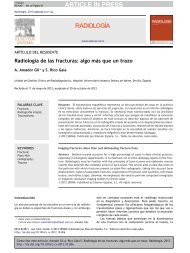for Invasive Procedures (NatSSIPs)
Z3q53
Z3q53
Create successful ePaper yourself
Turn your PDF publications into a flip-book with our unique Google optimized e-Paper software.
OFFICIAL<br />
across specialties, examples of which might include TAH <strong>for</strong> Total Abdominal<br />
Hysterectomy versus THR <strong>for</strong> Total Hip Replacement, and ERPC <strong>for</strong><br />
Evacuation of Retained Products of Conception versus ERCP <strong>for</strong> Endoscopic<br />
Retrograde Cholangio-Pancreatography.<br />
3. The in<strong>for</strong>mation that accompanies the scheduling of a procedure should include<br />
when relevant, but is not limited to:<br />
• Patient name.<br />
• Identification numbers, i.e. NHS number with or without hospital number.<br />
• Date of birth.<br />
• Gender.<br />
• Planned procedure.<br />
• Site and side of procedure if relevant.<br />
• Source of patient, e.g. ward or admissions lounge.<br />
• Further in<strong>for</strong>mation that can be provided when relevant may include:<br />
• NCEPOD classification of intervention.<br />
• Significant comorbidities.<br />
• Allergies, e.g. to latex or iodine.<br />
• Infection risk.<br />
• Any non-standard equipment requirements or non-stock prostheses.<br />
• Body mass index.<br />
• Planned post-procedural admission to high dependency or intensive care<br />
facility.<br />
4. Although the clinical team per<strong>for</strong>ming the procedure is primarily responsible <strong>for</strong><br />
its accurate scheduling, it must when appropriate involve other clinical<br />
disciplines such as anaesthesia and radiology to ensure that all healthcare<br />
professionals necessary <strong>for</strong> the safe per<strong>for</strong>mance of the procedure are<br />
available at the correct time.<br />
5. The clinical team per<strong>for</strong>ming the procedures is responsible <strong>for</strong> deciding the<br />
order of procedures within a list of cases. In determining the order of a list,<br />
priority should be given to clinical criteria, e.g. urgency, extremes of age,<br />
allergies such as latex allergy, and medical conditions that make early or<br />
predictable start times desirable, e.g. diabetes or sleep apnoea.<br />
6. The scheduling of a list must take into account the expected workload, taking<br />
into consideration other factors that include:<br />
• Team briefing and debriefing, and other key safety steps in LocSSIPs.<br />
• Induction of and emergence from anaesthesia, and the time taken <strong>for</strong><br />
anaesthetic procedures.<br />
• Patient positioning and preparation.<br />
• Preparation of all necessary equipment and instrumentation.<br />
28



